2 December 1778 Wednesday
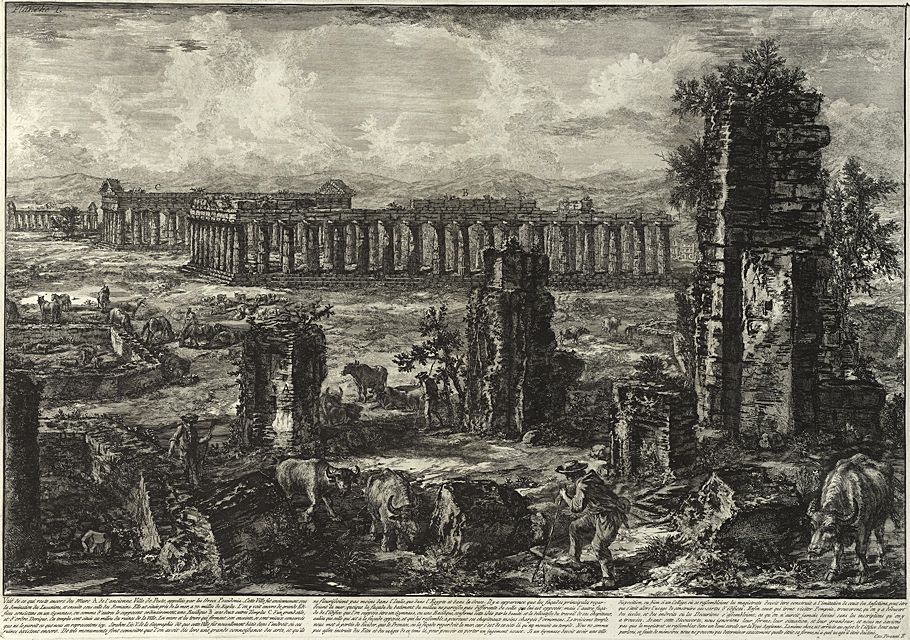
Vüe de ce qui reste encore des Murs A de l'ancienne Ville de Pesto, appellée par les Grecs Possidonia. Cette Ville fut anciennement sous la domination des Lucaniens, et ensuite sous celle des Romains. Elle est située prés de la mer, a 70. milles de Naples. L'on y voit encore de grands Éd ifices consistans en un Gymnase, ou comme d'autres le supposent ordinairement, une Basilique B avec deux autres Temples C d'un grand stile, et d'ordre Dorique. Ces temples sont situés au milieu des ruines de la Ville. Les murs et les tours qui forment son enceinte, se sont mieux conservés que ne le paroit ce que nous en representons icy. Strabon Liv. V. de la Geographie dit que cette Ville fut nouvellement bâtie dans l'endroit où ces ruines éx istent encore. De tels monuments font connoitre que l'on avoit dès lors une grande connoissance des arts, èt qu'ils ne fleurissoient pas moins dans l'Italie, que dans l'Egypte et dans la Grece. Il y a apparence que les façades principales regardoient la mer; quoique la façade du batiment du milieu ne paroisse pas differente de celle qui lui est opposée; mais l'autre façade de l'édifice que l'on suppose être un Gymnase, ou une Basilique, confirme cette idée par la beauté et la delicatesse du travail de ses chapiteaux, aulieu que celle qui est à la façade opposée, et qui lui ressemble, a pourtant ses chapiteaux moins chargés d'ornemens. Le troisieme temple nous met à portée de décider, que le Pronaos, ou la façade regardoit la mer, car c'est de ce cðté là qu'on montoit au temple. Nous ne sommes pas assez instruits des Rites et des usages de ce tems là, pour pouvoir en porter un jugement exact. Si un Gymnase devoit avoir une telle disposition, ou bien si un Collége où se rassembloient les magistrats devoit être construit à l'imitation de ceux des Anfictions, peut être que c'étoit alors l'usage de construire ces sortes d'édifices. Enfin ceux qui iront visiter Pompeia, trouveront, qu'on y a découvert des écoles, et des endroits où les Decurions s'assembloient, ce qu'on n'auroit jamais deviné sans les inscriptions qu'on y a trouvées. Avant cette découverte, nous ignorions leur forme, leur situation, et leur grandeur, et nous ne savions pas que le magistrat se rassemblat dans un demi cercle sur la Voye Appienne. La même chose, est arrivée au sujet de l'édifice dont nous parlons, et faute de mémoires nous ne pouvons pas determiner exactement quelle étoit sa forme, ni à quel usage il étoit destiné. Cav Piranesi F
View of what still remains of Walls A of the ancient City of Pesto, called Possidonia by the Greeks. This City was formerly under the domination of the Lucanians, and then under that of the Romans. It is situated near the sea, 70 miles from Naples. One still sees there great buildings consisting of a Gymnasium, or as others usually suppose, a Basilica B with two other Temples C of great style, and of Doric order. These temples are located among the ruins of the City. The walls and the towers which form its enclosure are better preserved than what we represent here appears to be. Strabo Book. V. de la Geographie says that this City was newly built in the place where these ruins still exist. Such monuments show that there was a great knowledge of the arts from then on, and that they flourished no less in Italy than in Egypt and Greece. It seems that the main facades looked out to sea; although the facade of the building in the middle does not appear to be different from that which is opposite to it; but the other facade of the building, which is supposed to be a Gymnasium or a Basilica, confirms this idea by the beauty and delicacy of the workmanship of its capitals, instead of that which is on the opposite facade, and which resembles, however, its capitals less laden with ornaments. The third temple puts us within reach of deciding that the Pronaos, where the facade looked at the sea, because it is from this side that we climbed to the temple. We are not sufficiently instructed in the Rites and customs of that time to be able to pass an exact judgment. If a Gymnasium should have such a layout, or if a College where the magistrates assembled should be built in imitation of those of the Anfictions, perhaps it was then the custom to build these sorts of buildings. Finally those who will visit Pompeia, will find that schools have been discovered there, and places where the Decurions assembled, which one would never have guessed without the inscriptions found there. Before this discovery, we did not know their form, their situation, and their size, and we did not know that the magistrate gathered in a semicircle on the Appian Way. The same thing happened with the building we are talking about, and for lack of memories we cannot determine exactly what its form was, nor what use it was intended for.
2 December 1812 Wednesday
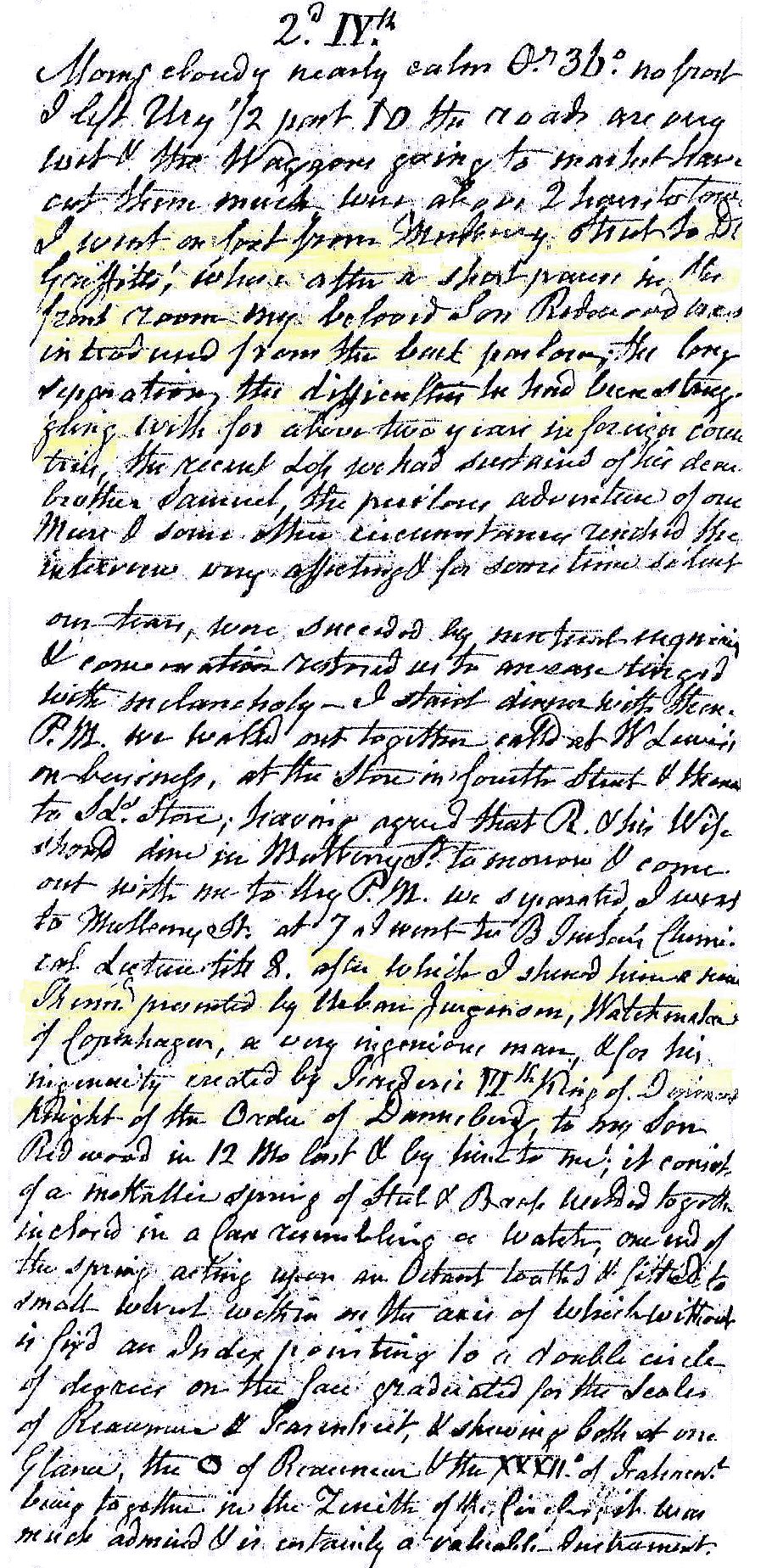
Morning cloudy, nearly calm. Temperature 36 degrees. No frost. I left Ury 1/2 past 10. The roads are very wet, and the wagons going to market have cut them very much. Was above 2 hours to town. I went on foot from Mulberry Street to Dr. Griffiths, where after a short pause in the front room my beloved son Redwood was introduced from the back parlor. The long separation, the difficulties he had been struggling with for above two years in foreign countries, the recent loss we had sustained of his dear brother Samuel, the perilous adventures of our Miers, and some other circumstances rendered the interview very effecting and for sometime silent our tears, were succeeded by ......... .......... and communication[?] restored us to ... ..... tinged with melancholy. I staid[?] dinner with them. PM we walked out together, called at W. Lewis's on business at the store on 4th Street and then to SL's store, having agreed the R. and his wife should dine at Mulberry Street tomorrow and come out with me to Ury. PM we separated, I went to Mulberry Street. At 7 I went to B. Fisher's[?] chemical lecture till 8, after which I showed him a .... ....... presented by ...... Jorgensen, watchmaker of Copenhagen, a very ingenious man, and for his ingenuity created by Fredrick[?] King of Denmark[?] Knight of the Order of [the] Dannebrog, to my son Redwood last December and by him to me; it consists of a metallic spring of steel and brass, worked together, included in a case resembling a watch. One end of the spring acting upon an octant[?] locked and fitted to small ..... within on the axis of which without is fixed an index pointing to a double circle of degrees on the face, graduated for the scales of R....... and Fahrenheit, and showing both at one glance, the degree of R....... and the 32nd of Fahrenheit being together in the zenith of the circle[?]. It was much admired, and is certainly a valuable instrument.
2 December 2005
Consumerism and Monumentality
I agree that there is a kind of hegemony operating within architecture today (and definitely since the Modern Movement/International Style), but architecture wasn't always that way. Most of architectures' histories are like languages' histories in that they were all tied/related to specific places on the planet and reflected the culture of those places.
Reflecting on what presently constitutes architectural "history," perhaps architecture is now a world trade commodity more than anything else.
Is the next big thing to mix up the fashion brands? Wear your Foster pants with Woods belt over Eisenman panties?
2 December 2010
Re: “New” Helens
With Christianity then the newly official and only state religion of the Roman Empire, no doubt it eventually crossed Galla Placidia's mind as to what the role of a newly, officially Christian Empress of the Roman Empire might be. Helena, if not also Eutropia, where then the obvious Imperial role models.
There are early 19th century architectural drawings of the (so-called) Tomb of Galla Placidia, then known as the Church of St. Nazarus and St. Celsus, within Seroux d'Agincourt's History of Art...
2 December 2017

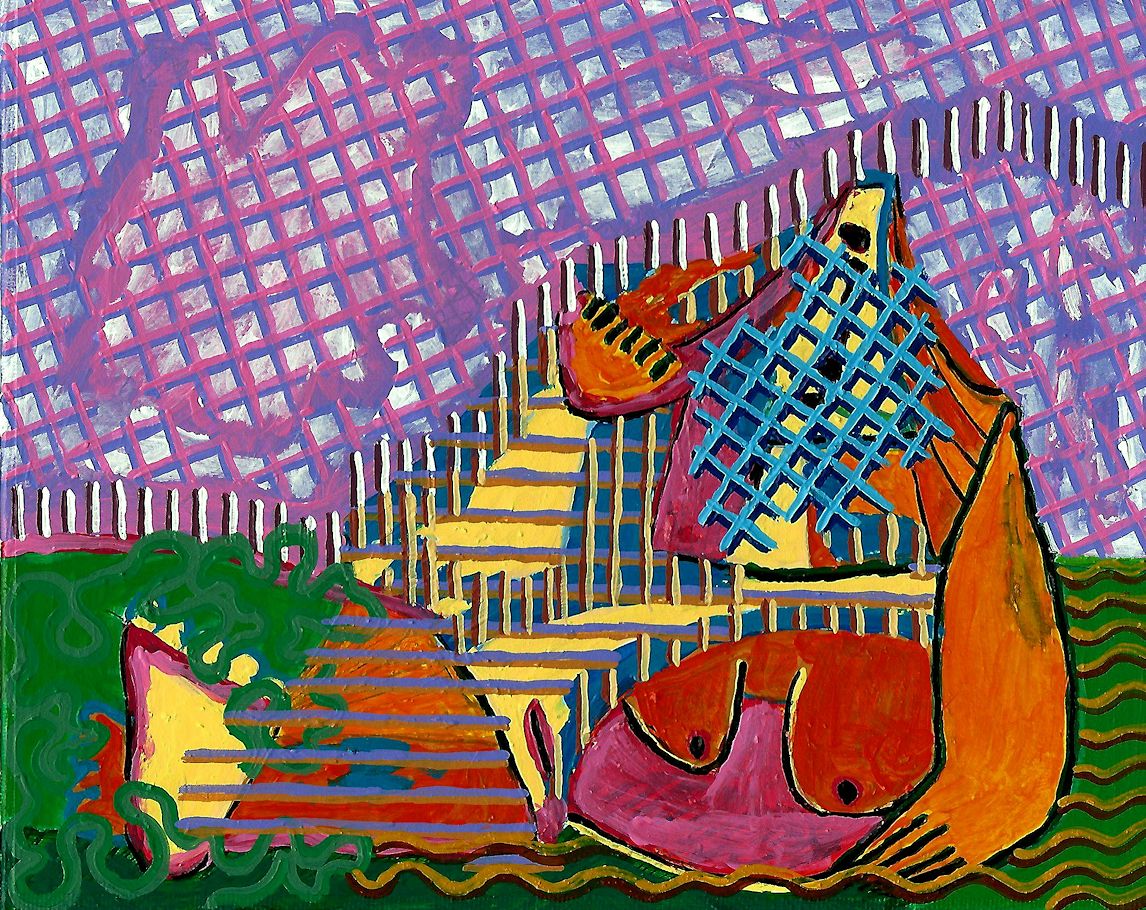
POPICA 010
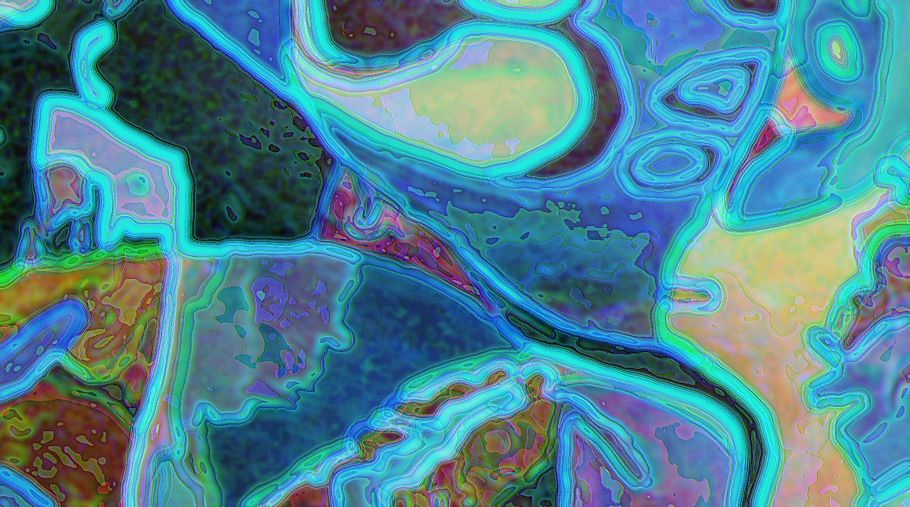
Virtual Painting 482

Virtual Painting 486
2 December 2019
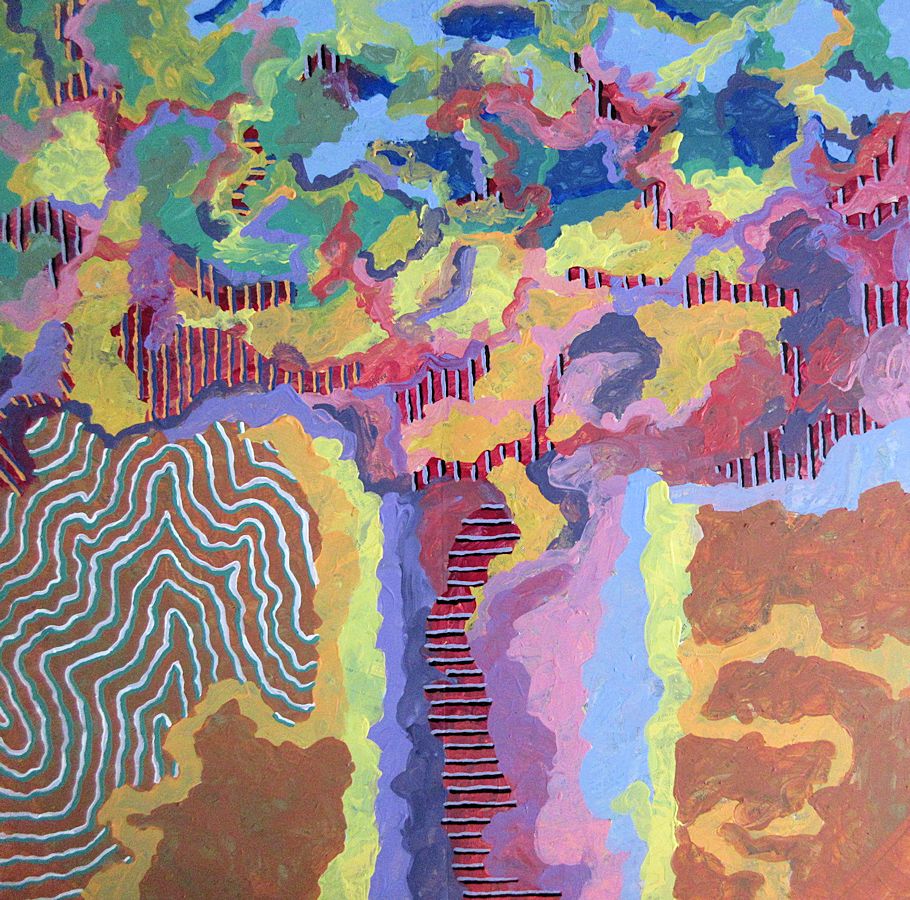
2 December 2022 Friday
21:52 SL
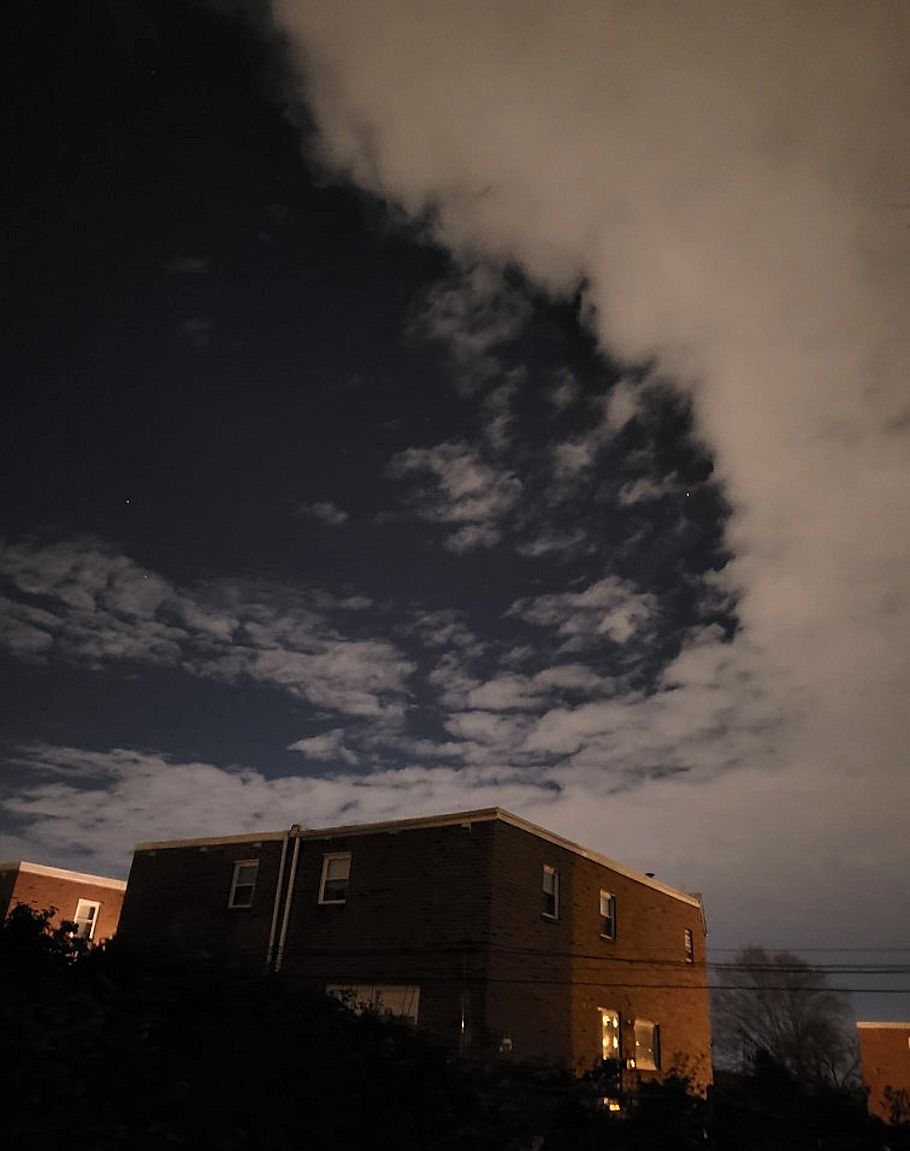
It's another cloudy text night.
2022.12.03 11:27 HW
Beautiful and Operatic
2022.12.03 11:29 SL
Brunhilde meets Wolfhilde
2022.12.03 11:33 HW
LOL
|